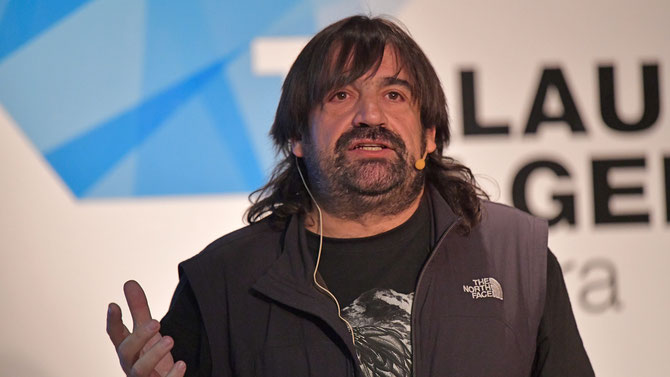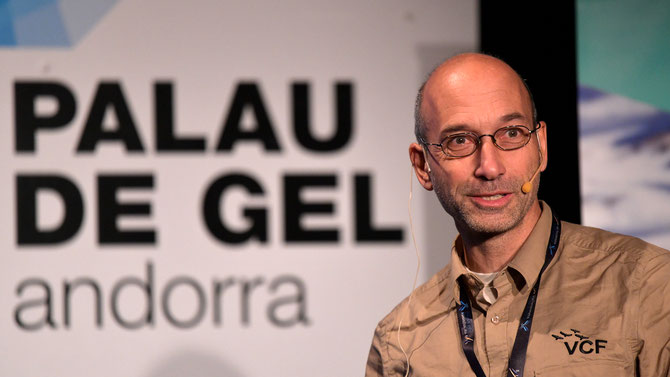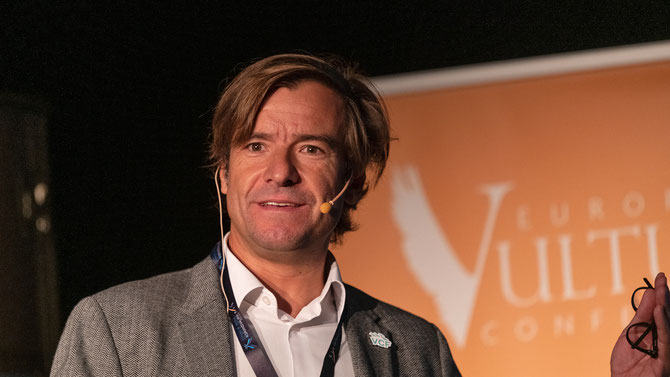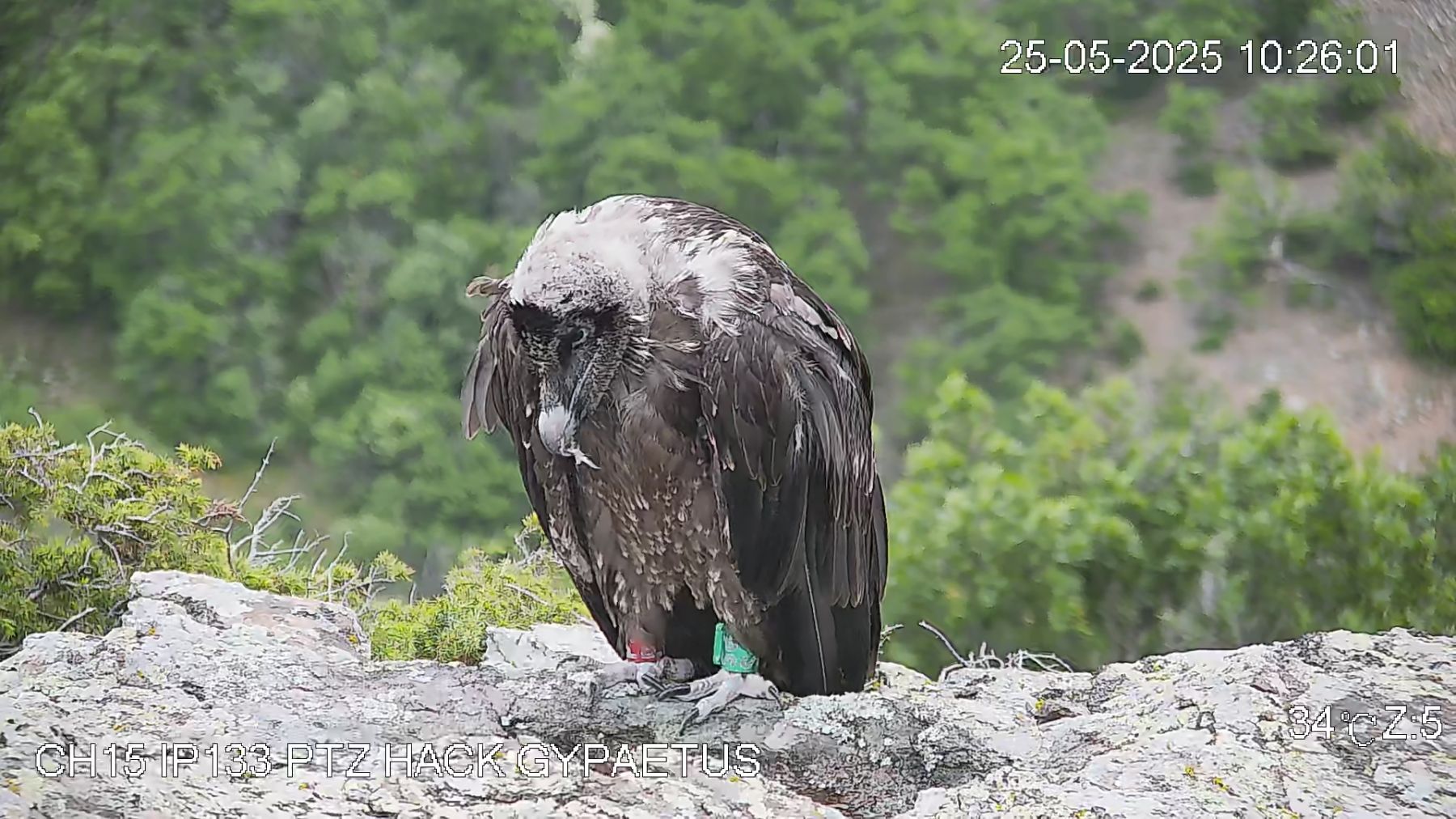
It’s that time of the year again when Bearded Vulture conservationists meet to discuss Europe’s rarest vulture species! Nearly 100 delegates have joined us in Canillo, Andorra for this year’s Annual Bearded Vulture Meeting. Day one is now over, and we want to share the key insights from the many interesting presentation. Don’t forget that you can also follow the updates live on our Twitter feed with #BeardedVultures2019.
Welcome
We had the pleasure to start the meeting with a warm, welcoming message by Hble. Sr. Josep Mandicó Calvó (Cònsol Major de la Parròquia de Canillo), M.I. Sra. Sílvia Calvó Armengol (Ministra de Medi Ambient, Agricultura i Sostenibilitat del Govern d’Andorra), and Sra. Carolina Motwani (Presidenta de l’Associació per a la Defensa de la Natura). Our Director, José Tavares, carried on with some conservation optimism, sharing the comeback story of the Bearded Vulture in Europe. He also shared some interesting statistics about our location – did you know there is only one Bearded Vulture breeding pair in Andorra, making it 0.26% of the European Bearded Vulture population? It might be a small percentage, but every pair counts!
20 Years of conservation of the Bearded Vulture in Andorra by Àngel Bonada

Àngel Bonada talked us through the 20 years of Bearded Vulture conservation in Andorra. The species disappeared for a few years in Andorra, and in 2004, a pair started to breed successfully. That year the first chick of the pair successfully fledged, and since then until today, the pair produced a total of six fledglings! Now, Andorra is also celebrating a significant anniversary. It’s been 20 years since signing PACT, which is the action plan to conserve the species in the country.
Bearded Vulture research presented at the European Vulture Conference by Louis Phipps
Our Research Officer, Louis Phipps, summarised the key Bearded Vulture research and conservation initiatives that were presented during the European Vulture Conference. For more information, visit the webpage of the European Vulture Conference.
IOD Public Engagement by Mirco Lauper, Eleni Karatzia and Enrico Bassi
Mirco Lauper began the presentation by sharing an overview of the International Observation Day, and its success when it comes to raising awareness about Bearded Vultures and engaging the public with their conservation, with 1000 observers spending 6000 hours at 600 sites across Europe in 2018! Eleni Karatzia then discussed some interesting findings from the IOD public engagement survey, covering demographics and motivations of participants. Enrico Bassi then continued to share his successful ways to encourage public participation of Bearded Vulture monitoring in Stelvio National Park and Italy. In Stelvio, they organise International Observation WEEKEND (IOW) to improve the team’s skills through knowledge sharing and to ensure standardised data collection, and, of course, to have fun during the process!
What photographers can do for Bearded Vulture conservation by Hansruedi Weyrich
Hansruedi Weyrich discussed how photography could be used as a tool to document, communicate, present and fundraise for Bearded Vulture conservation. Wildlife Photography can also help with monitoring Bearded Vulture populations from photographs, as specific characteristics or rings can identify individuals, which can help track movements and monitor the species.
How do juvenile Bearded Vultures use supplementary feeding stations? by Ruth García Jiménez
Ruth Garcia Jiminez shared her insights on how Bearded Vultures use supplementary feeding sites. Feeding sites can attract vultures in certain locations. Could this explain the lack of expansion into other areas?
EEP Update by Alex Llopis Dell

Our very own Alex Llopis provided an update on the Bearded Vulture EEP. In 2019, there were 18 breeding pairs and 18 successfully raised offsprings from the specialised breeding centres. At zoos and private collections, there were 22 breeding pairs and 11 fledglings. Further, a record of 22 Bearded Vultures were reintroduced into the wild from the EEP and seven were included in the captive network. It is also very important to note that the average age of death of Bearded Vultures in captivity has increased over time due to improved knowledge and experience at specialised breeding centres and zoos. Finally, the great achievements of the Bearded Vulture EEP are all thanks to fantastic cooperation and coordination among the many different stakeholders!
Recovery of Bearded Vulture in Picos de Europa National Park (Spain) by Gerardo Báguena Sánchez
Gerardo Baguena Sanchez took us through the recovery of the Bearded Vulture in the Picos de Europe Nation Park in Spain. Thanks to the extraction of clutches of birds with very low breeding success, we were able to maintain the genetic information on the whole Bearded Vulture population. For this, it needs an excellent monitoring effort of the entire population in the Pyrenees. It was also encouraging to see the first breeding signs by a pair in 2017. And in 2019 a second pair showed breeding signs.
Learning from failures: Fabian & Julia & Stelvio50: A troubled pair, a chick and a release by Camillo Sandri
Camillo Sandri talked about how to learn from failures to improve success at the Parco Natura Viva captive breeding programme. For example, sometimes the captive adults fight, which can damage the eggs, or even break the eggs by stepping on them. In those cases, it is necessary to remove the eggs for artificial incubation to be returned to the same or other adult pairs for adoption at a later date.
Health assessment and drug residues in Bearded Vultures at the Wildlife Centres of Vallcalent and Torreferrussa (Catalonia, NE Spain) by Ignasi Marco
Ignasi Marcopresented about health assessment and drug residues in Bearded Vultures in two wildlife centres in Spain. Overall the birds in the breeding centres are in good health with no evidence of antibiotic resistance in E. coli or NSAID residues. However 5/13 Bearded Vultures showed evidence of antibiotic residues, most likely the source is the rabbits which they are fed with. This is quite concerning, and the team will analyse this food source now.
Bearded Vulture release strategy 2020+ by José Tavares

José Tavares presented the Bearded Vulture release strategy for 2019-2020. We expect an increase in the number of breeding pairs and consequently, an increase of chicks within the EEP but the available number of nestlings for releases in 2020 will be similar as in 2019. Most of these new breeding pairs are coming from less common bloodlines, and their descendants have to be included in the EEP to assure its long-term genetic variability and its demographic stability.
Don’t forget to follow the updates live on Twitter with #BeardedVultures2019.





